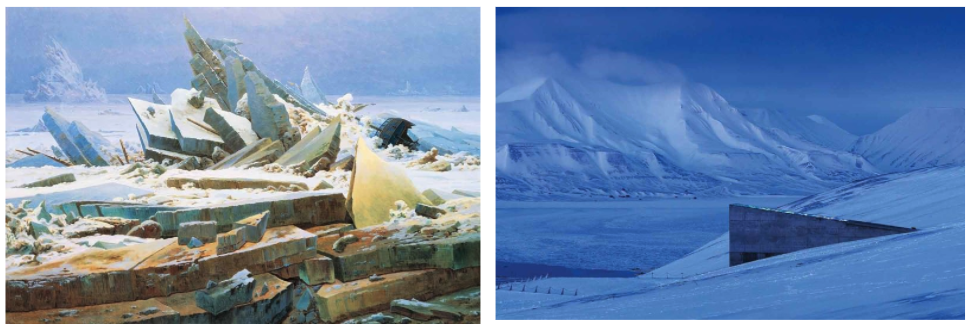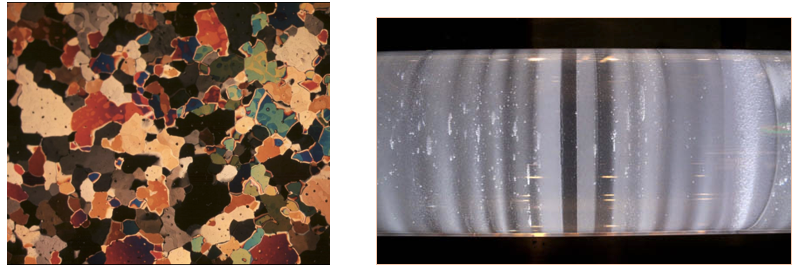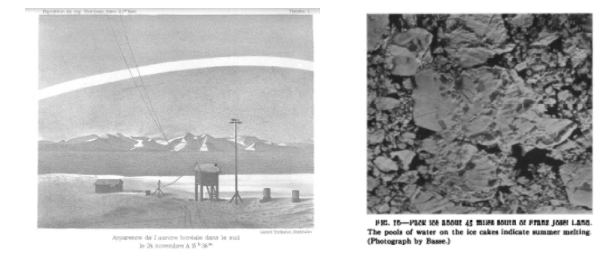Science and Ice: The Changing Sublime in the Frozen North
November 14, 2017

It’s rather strange, the romance of ice. Strange that a material so hard and cold should seem so alive: so vital and dynamic, so noisy, so busy. Strange and romantic, too, that this lively ice is the pulse of the earth: that the ebb and flow of ice caps dictate the scope of planetary life. In 1818, when Mary Shelley sent Frankenstein’s monster fleeing into the Arctic waste, she had no conception that the poles played such a role in the life of the rest of the globe, but she—like other Romantics—saw something uncannily lively about the frozen region. The uncanny and strange are essential facets of the sublime: the sensation that something terrible is also pleasurable, an overwhelming awe at nature. Despite scientific explanation, this bewildering sublimity persists today—just stand on the shore of a glacier and listen to the ice groan and bubble, crackle and pop.
https://www.youtube.com/watch?v=OHJyhUjA1cc&feature=youtu.be
Looking specifically to the frozen north, my project for PPEH traces the resonance of nineteenth-century Romantic conceptions of the Arctic with twentieth-century scientific conceptions of the region: I historicize the sublime as it changes, but doesn’t fade, over time. My work thus explores how doing science in the Arctic--specifically by northern European meteorologists, oceanographers, and glaciologists--develops over the long twentieth century. When the Arctic emerged as a dynamic region whose changeability, both spatially and temporally, is crucial to understanding the natural history of the earth as a whole. Growing and shrinking ice caps reify the changes of ocean and atmosphere, and through ice cores and ice mapping, the past of the planet is laid bare. But despite an increasingly mechanistic understanding of nature, what kind of nature is found amongst the ice is, I argue, inescapably inflected by these earlier conceptions of the Arctic as sublime. By the twentieth century, monsters may have faded from Arctic imaginaries, but ice retained its sublime capacity to bend space and time, and to dictate life.

Changing scientific representations of ice, and different uses of ice as a scientific instrument, anchor my work, linking the Arctic as a region across a long timeframe: 1883, when the first International Polar Year (IPY) was held, to 2007, the most recent IPY. I look at scientific illustrations of the Arctic from 1883, aerial photographs of the ice pack from 1931, ice atlases from 1957, ice cores from the 1970s, and seed banking in 2008 to explore how ways of seeing and knowing the Arctic result in a spatially and temporally dynamic “scientific sublime.”

Ice is vital and lively, and I want my work to be so, too. PPEH provides a space where I can do more than write this project, it is a space where I can experiment with ways of producing it. By engaging with people beyond my discipline and beyond academia, I hope to make my history-heavy research relevant to a wider community. Central to this effort will be engagement with the concept of the anthropocene—the argument that we’ve entered a new geologic era, created by man—in which the poles loom large. The icy bookends of the planet are the harbingers of climate change, places where the effects of a warming planet are brought into sharp relief. How we can see, communicate, and understand climate change is all about how we understand and see nature—a question that lies at the core of my research. Through PPEH, I hope to think beyond scientific representations of climate change, to engage with art and embodiment, with experience and affect. Sound in particular matters in the Arctic (remember that glacier, bubbling and groaning?), and I want to have people hear the sublime Arctic in the anthropocene, too.
